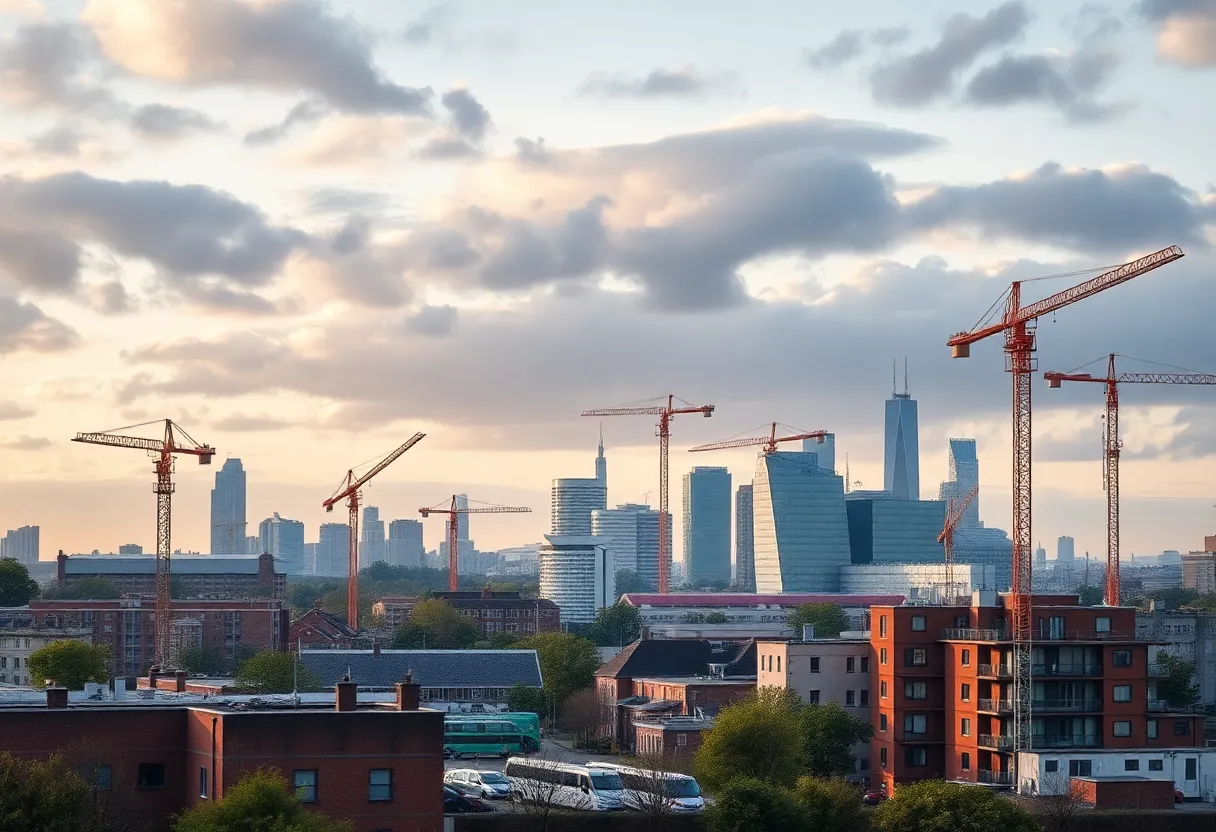United Kingdom, August 14, 2025
News Summary
The UK economy showcased surprising growth in June, with a month-on-month increase of 0.4%, exceeding economists’ expectations. The services and construction sectors drove this progress, marking a significant positive shift. However, challenges remain in production, while concerns about potential economic downturns loom. The unexpected growth could impact monetary policy decisions moving forward, potentially affecting interest rates and tax policies. Despite the positive GDP report, the FTSE 100 showed no significant gains, indicating lingering market uncertainties.
UK GDP Surprises with Unexpected Growth in June; Economists Warn on Future Risks
The UK economy grew by 0.4% month-on-month in June 2025, producing a stronger-than-expected result for the second quarter. Overall output rose by 0.3% quarter-on-quarter, beating forecasts that had pointed to only 0.1% growth. The surprise lift was driven by activity in the services and construction sectors, even as production and manufacturing slipped over the same period.
Top-line picture
The strongest parts of the report were clear: services output increased by 0.4% in the quarter and construction rose sharply at 1.2%. Those gains offset a drop in production output, which includes manufacturing. On a per-person basis, real GDP per head rose by 0.2% in the quarter and by 0.7% year-on-year.
Why the surprise matters now
The second-quarter advance marked a slowdown from a stronger 0.7% growth in the first quarter, but the outturn still exceeded many expectations. The economy showed resilience to external and domestic pressures, including recent tariff moves by the United States and higher domestic taxes. That resilience was partly supported by government fiscal measures that provided short-term backing to activity.
Labour and productivity signals
Some sectors reported healthier output while reducing staff numbers, pointing to signs of improved productivity. Notably, hotels and restaurants returned to positive territory with output up 2.4% quarter-on-quarter, the first increase in that area in several years. That rise suggests firms in hospitality are getting more output from fewer workers, a trend that could influence wider productivity readings in official forecasts.
Policy and market implications
Stronger data could alter the timing of interest-rate moves. The report makes it less likely that the central bank will make a fresh move to cut borrowing costs this year, pushing expectations for a further easing into next year. Markets did not rally on the news: the main share index opened slightly lower, down about 0.3% in early trading, showing investors remain cautious.
Budget and tax outlook
With this surprise growth, official forecasters may feel more confident about future productivity gains, which could affect how the upcoming autumn budget is shaped. The chancellor plans to focus on boosting productivity and cutting red tape. There is ongoing speculation about possible tax rule changes, including potential tweaks to inheritance tax, but any revisions will be weighed against uncertainty around near-term growth.
Corporate and wider economic context
Several corporate results and deals were reported alongside the GDP surprise. One insurer saw a large rise in profit, making it one of the top risers on the main market. Another major insurer reported higher operating profit in the first half of 2025, and a large energy company agreed to sell a liquefied natural gas business for around £1.7 billion. In Europe, industrial production figures showed a drop of 1.3% month-on-month for June, underlining weakness in manufacturing outside the UK.
Outlook and risks
Economists are describing the June data as a clear upside surprise but caution that headwinds remain. Domestic tax changes, global trade shifts and the path of productivity will shape growth in the third quarter and beyond. Analysts note that while the government may have room to be less aggressive on tax rises than some forecasts had assumed, uncertainty still clouds near-term prospects.
Bottom line
The UK economy delivered a stronger-than-expected second quarter thanks to services and construction, with modest gains in output per person. The result eases some near-term worries but does not remove risks from weaker production, global industrial weakness and policy uncertainty. The mix of better growth and ongoing risks means policymakers and markets are likely to stay cautious as they weigh next moves on rates and fiscal policy.
Frequently Asked Questions
What drove the June GDP surprise?
Growth in the services and construction sectors produced the bulk of the upside. Services rose by around 0.4% and construction by about 1.2%, which together offset falls in production output.
Does this mean interest rates will be cut soon?
Stronger GDP makes an immediate cut less likely. Policymakers are more likely to delay moves to lower rates until there is clearer evidence of sustained slowdown.
Did job losses increase despite growth?
Some firms reported lower staff numbers while still increasing output, which suggests productivity gains in parts of the economy, notably hospitality.
Will this change the autumn budget plans?
The surprise growth may give the government more confidence on tax and spending choices, potentially reducing the need for larger tax rises that had been forecast by some forecasters.
How did markets react?
Markets were muted. The main share index fell slightly in early trading, reflecting caution over durability of the recovery and other global risks.
Key facts at a glance
| Item | Detail |
|---|---|
| June monthly growth | 0.4% |
| Q2 quarter-on-quarter | 0.3% (expected 0.1%) |
| Services growth (Q2) | 0.4% |
| Construction growth (Q2) | 1.2% |
| Production / manufacturing | Declined in Q2 |
| Real GDP per head | +0.2% (quarter), +0.7% (year) |
| Hotel & restaurant output | +2.4% (quarter) |
| European industrial production (June) | -1.3% month-on-month |
| Market reaction | Main index down about 0.3% early trading |
Deeper Dive: News & Info About This Topic
Additional Resources
- The Guardian: UK Economy Live Updates
- Wikipedia: Economy of the United Kingdom
- Financial Times: UK Economic Analysis
- Google Search: UK GDP growth 2025
- FT Adviser: Non-Dom Regime Analysis
- Google Scholar: UK Economy 2025
- Focus Economics: UK National Accounts
- Encyclopedia Britannica: Economy
- Microsoft Stories: AI Start-Ups in UK
- Google News: Bank of England Interest Rate Decision





